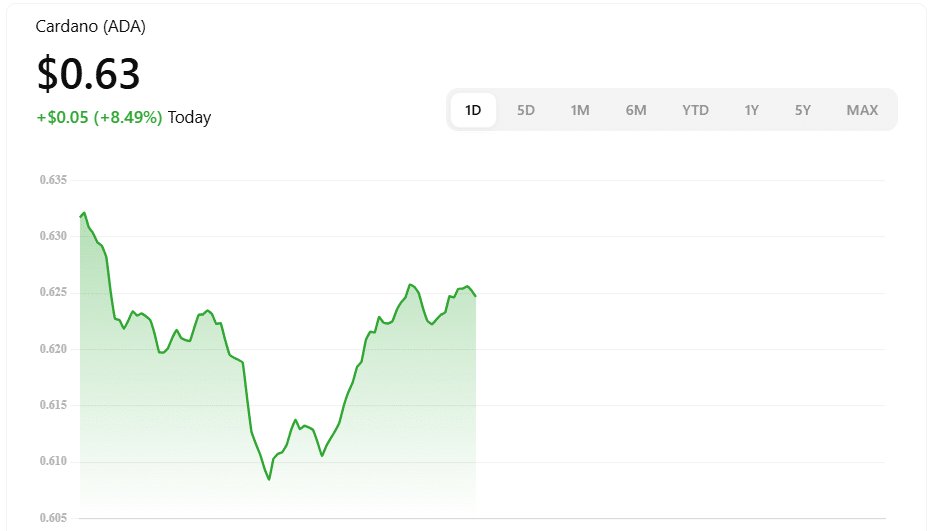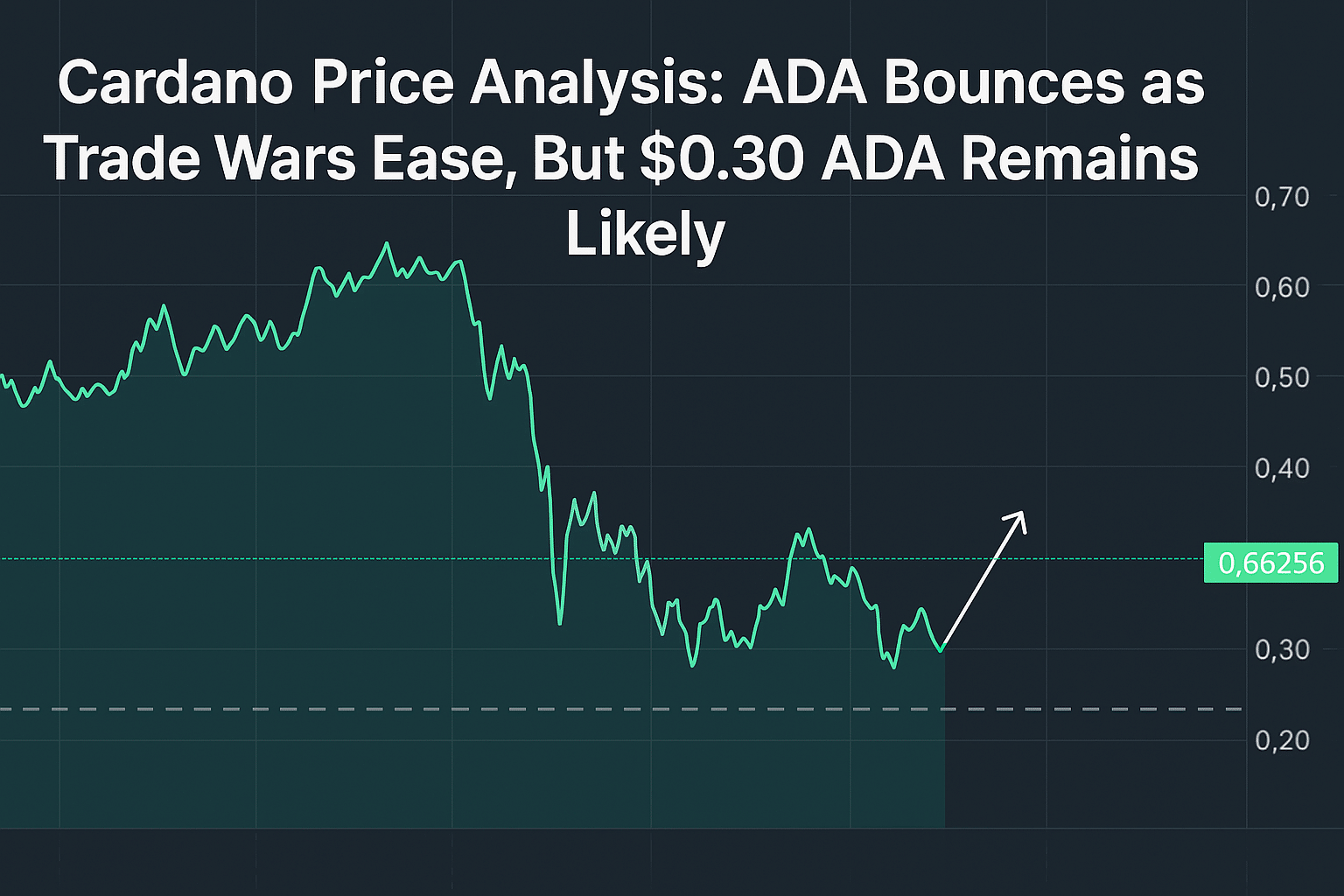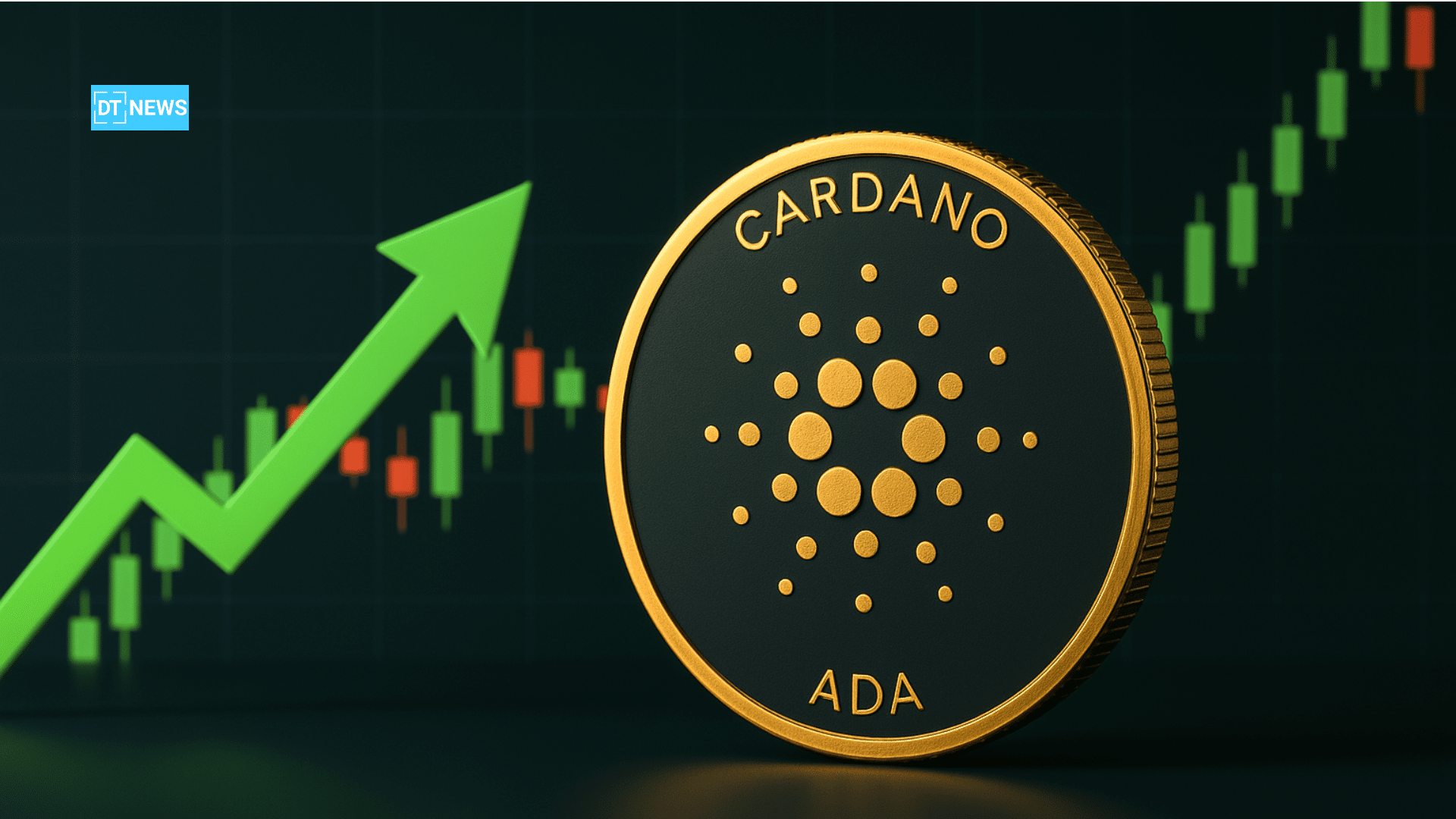Cardano (ADA) has recently experienced notable price fluctuations, capturing the attention of investors and analysts alike. This article delves into the current market dynamics, technical indicators, and future projections for ADA, providing a comprehensive stakeholder analysis.
- Recent Price Movements
- ADA Technical Analysis
- Market Sentiment and On-Chain Data
- Future Outlook and Cardano Price Predictions
- Conclusion
- FAQs
- Q: What is the significance of the 200-day moving average for ADA?
- Q: How do macroeconomic factors influence ADA’s price?
- Q: Are there optimistic forecasts for ADA’s future price?
- Glossary of Key Terms
Recent Price Movements
In the past week, ADA’s price has seen a downward trend, influenced by broader macroeconomic factors, including recent U.S. tariff policies. These developments have contributed to a 6% decline in Cardano’s value over the past 24 hours, mirroring similar trends in other major cryptocurrencies.

ADA Technical Analysis
ADA is currently trading below the 200-day Exponential Moving Average (EMA) on both four-hour and daily time frames, indicating a strong bearish momentum. Additionally, a “death cross” has appeared on the ADA chart, where the short-term moving average crosses below the long-term moving average, signaling a potential bearish trend.
Support and Resistance Levels
Support: Immediate support is identified at $0.5680, with a more substantial level at $0.5550. A breach below these points could open the path to $0.5320.
Resistance: On the upside, resistance is observed at $0.60, aligning with the 61.8% Fibonacci retracement level of the recent decline.

Market Sentiment and On-Chain Data
On-chain analytics reveal that traders are currently over-leveraged at $0.544 on the support side and $0.588 on the resistance side, with $16.40 million worth of short positions. This indicates a bearish outlook among market participants, potentially exerting downward pressure on ADA’s price in the near term.
Future Outlook and Cardano Price Predictions
Analysts present a mixed outlook for ADA:
Bearish Scenario: Some forecasts predict a potential decline to $0.40, citing bearish market structures and liquidity retests.
Bullish Scenario: Conversely, optimistic projections envision ADA reaching as high as $5.60, driven by anticipated technological advancements and increased adoption.
Conclusion
Cardano’s recent price movements reflect a complex interplay of technical factors and broader economic conditions. While the easing of trade tensions has provided some relief, significant challenges remain. Investors should exercise caution, conduct thorough research, and stay informed about ongoing developments to navigate the volatile cryptocurrency landscape effectively.
FAQs
Q: What is the significance of the 200-day moving average for ADA?
A: The 200-day moving average is a widely observed technical indicator. For ADA, staying above this level has historically signaled potential bullish trends, while falling below it may indicate bearish momentum.
Q: How do macroeconomic factors influence ADA’s price?
A: Macroeconomic elements like trade policies and interest rates can impact investor sentiment and liquidity, thereby affecting ADA’s market performance.
Q: Are there optimistic forecasts for ADA’s future price?
A: Yes, some analysts predict that ADA could reach up to $5.60, driven by technological advancements and increased adoption.
Glossary of Key Terms
200-Day Moving Average (200DMA): An average of an asset’s closing prices over the past 200 days, used to identify long-term trends.
Support Level: A price point where an asset tends to find buying interest, preventing the price from falling further.
Resistance Level: A price point where selling interest tends to emerge, preventing the price from rising further.
Liquidity Retest: A situation where the price revisits a previous support or resistance level to test its strength.
Macroeconomic Factors: Large-scale economic elements, such as fiscal policies and global events, that influence financial markets.
Disclaimer
This article is for informational purposes only and does not constitute financial advice. Cryptocurrency investments carry significant risks, including market volatility and regulatory considerations. Readers should conduct their own research and consult with a qualified financial advisor before making any investment decisions.



















































































































